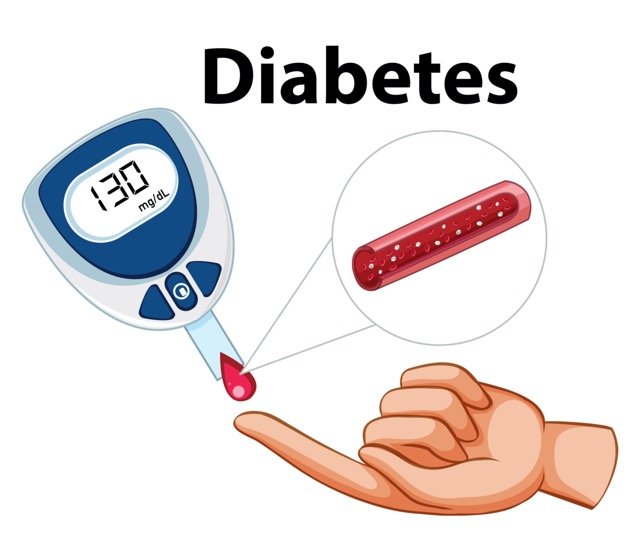Velaglucerase alfa is a medication used in the treatment of Gaucher disease, a rare genetic disorder where the body lacks an enzyme called glucocerebrosidase, leading to the accumulation of certain substances in various organs. Velaglucerase alfa is a recombinant form of human glucocerebrosidase, meaning it's produced through genetic engineering techniques. By providing the missing enzyme, it helps break down these accumulated substances, reducing symptoms and improving the quality of life for individuals with Gaucher disease.
Vpriv (Velaglucerase alfa) is an enzyme with amino acid sequences that are similar to the endogenous glucocerebrosidase enzyme. It is used in children and adults with type 1 Gaucher disease for the long term enzymatic replacement. It results in an improvement in anemia, thrombocytopenia, skeletal pains, bony disease, and visceromegaly.
Vpriv (Velaglucerase alfa) Dose in Adult
Note:
- Velaglucerase alfa is a medicine used to treat Gaucher disease, a rare genetic condition.
- People with Gaucher disease lack a specific enzyme, causing harmful substances to build up in their bodies.
- Velaglucerase alfa helps by providing this missing enzyme, which breaks down those harmful substances, easing symptoms and improving their quality of life.
- Sometimes, patients might experience reactions during the infusion, so doctors might consider giving them antihistamines or corticosteroids before treatment to prevent these reactions.
- However, this wasn't done routinely during clinical studies.
Vpriv dosage in the treatment of Type 1 Gaucher’s disease:
- The usual dose of Velaglucerase alfa is 60 units per kilogram of body weight, given intravenously every two weeks.
- However, the dose can be adjusted based on the severity of the disease, with a range of 15 to 60 units per kilogram evaluated in clinical trials.
Note:
- When switching from another medication called imiglucerase in stable patients, treatment with Velaglucerase alfa should begin two weeks after the last imiglucerase dose, and at the same dose level.
Vpriv dose in Children:
Note:
- Velaglucerase alfa is a medicine used to treat Gaucher disease, a rare genetic condition.
- People with Gaucher disease lack a specific enzyme, causing harmful substances to build up in their bodies.
- Velaglucerase alfa helps by providing this missing enzyme, which breaks down those harmful substances, easing symptoms and improving their quality of life.
- Sometimes, patients might experience reactions during the infusion, so doctors might consider giving them antihistamines or corticosteroids before treatment to prevent these reactions.
- However, this wasn't done routinely during clinical studies.
Vpriv dose in the treatment of Type 1 Gaucher’s disease:
In children and adolescents aged 4 to 17 years:
- The typical dose of Velaglucerase alfa is 60 units per kilogram of body weight, administered intravenously every other week.
- This dosage can be adjusted depending on the severity of the disease, with a dosing range of 15 to 60 units per kilogram every other week.
Note:
- When transitioning from the medication imiglucerase in stable patients, Velaglucerase alfa treatment should begin two weeks after the last imiglucerase dose, maintaining the same dose level as their stable imiglucerase therapy.
Vpriv Pregnancy Risk Factor B
- Velaglucerase alfa has been categorized as Pregnancy Risk Factor B, indicating that studies in animals haven't shown any teratogenic effects.
- However, it's essential to note that pregnancy can worsen existing type I Gaucher disease or lead to new symptoms.
- Women with type I Gaucher disease face a higher risk of spontaneous abortion if the disease isn't well controlled.
- Adverse pregnancy outcomes, such as hepatosplenomegaly (enlargement of the liver and spleen) and thrombocytopenia (low platelet count), may also occur.
- It underscores the importance of managing Gaucher disease effectively before and during pregnancy to minimize risks to both the mother and the baby.
Use Velaglucerase alfa during breastfeeding
- It's unclear whether velaglucerase alfa is excreted in breast milk.
- Therefore, caution is advised when administering it to nursing women.
- While there isn't definitive evidence of its presence in breast milk, it's always prudent to exercise caution to ensure the safety of both the nursing mother and her baby.
Vpriv (Velaglucerase alfa) Dose in Kidney Disease:
- The manufacturer's labeling for velaglucerase alfa does not include specific dosage adjustments for patients with kidney disease.
Vpriv (Velaglucerase alfa) Dose in Liver Disease:
- The manufacturer's labeling for velaglucerase alfa does not include specific dosage adjustments for patients with liver disease.
Common Side Effects of Vpriv (Velaglucerase alfa) Include:
- Central Nervous System:
- Headache
- Dizziness
- Fatigue
- Weakness
- Gastrointestinal:
- Abdominal Pain
- Hematologic & Oncologic:
- Prolonged Partial Thromboplastin Time
- Hypersensitivity:
- Hypersensitivity Reaction
- Neuromuscular & Skeletal:
- Back Pain
- Arthralgia
- Miscellaneous:
- Fever
Less Common Side Effects of Vpriv Include:
- Cardiovascular:
- Flushing
- Hypertension
- Hypotension
- Tachycardia
- Dermatologic:
- Skin rash
- Urticaria
- Gastrointestinal:
- Nausea
- Immunologic:
- Immunogenicity
- Neuromuscular & skeletal:
- Ostealgia
Contraindication to Vpriv (Velaglucerase alfa) Include:
- The manufacturer's labeling for velaglucerase alfa doesn't mention any situations where the medication should not be used, known as contraindications.
Warnings and precautions
Formation of antibodies:
- Antibody formation, particularly IgG antibodies, has been observed in some patients receiving velaglucerase alfa, although the significance of this in clinical terms is not fully understood.
- Patients who have developed an immune response to other enzyme replacement therapies and are transitioning to velaglucerase alfa should be closely monitored for the development of antibodies.
Hypersensitivity reactions
- Velaglucerase alfa should be used cautiously in patients who have experienced hypersensitivity reactions to velaglucerase alfa itself or other enzyme replacement therapies.
- Anaphylaxis, a severe allergic reaction, has been reported, so it's important to have appropriate medical support readily available in case of a serious reaction.
- The most common hypersensitivity reactions observed in clinical trials include symptoms like weakness, dizziness, tiredness, fever, headache, changes in blood pressure, nausea, and fever.
- These reactions were mostly mild and tended to happen within the first six months of treatment.
- Managing more severe reactions involves providing symptomatic treatment, considering pre-treatment with antihistamines, antipyretics, and/or corticosteroids, and slowing down the infusion rate.
- If anaphylaxis or other acute reactions occur, treatment should be stopped.
Monitor:
- Blood Tests: Regularly check Complete Blood Count (CBC) and liver enzyme levels to monitor for any changes.
- Antibody Levels: Keep an eye on IgG antibody levels, especially in patients who have previously developed antibodies to other enzyme replacement therapies.
- Imaging: Conduct MRI, CT, or ultrasound scans of the liver and spleen to track any changes in size or condition.
- Bone Health: Perform bone density studies to assess bone strength and monitor for any signs of osteoporosis or bone thinning.
How to administer Vpriv (Velaglucerase alfa)?
- Infusion Time: Administer the medication intravenously over a period of one hour.
- Filter Use: Utilize an inline, low protein-binding 0.2-micron filter during the infusion process.
- Avoid Mixing: Do not infuse any other products through the same infusion tubing to prevent potential interactions or contamination.
Mechanism of action of Velaglucerase alfa (Vpriv):
- Velaglucerase alfa works similarly to the natural glucocerebrosidase found in the body.
- It helps break down glucocerebroside, a substance that accumulates in the lysosomes of cells due to a deficiency of glucocerebrosidase enzyme in patients with type 1 Gaucher's disease.
- This accumulation leads to symptoms like enlarged liver and spleen (hepatosplenomegaly), anemia, low platelet count (thrombocytopenia), and bone problems.
- Velaglucerase alfa is used to reduce hepatosplenomegaly and improve these symptoms, including anemia, thrombocytopenia, and bone disease.
- The following information presents combined data from both pediatric patients (aged 4-17 years) and adults.
Distribution:
- Volume at Steady-State: Velaglucerase alfa has a volume of distribution at steady-state ranging from 0.08 to 0.11 liters per kilogram of body weight.
Elimination:
- Half-life: The half-life of elimination for velaglucerase alfa is relatively short, lasting approximately 11 to 12 minutes.
International Brands of Velaglucerase alfa:
- Vpriv
Velaglucerase alfa Brands in Pakistan:
No Brands Available in Pakistan.







